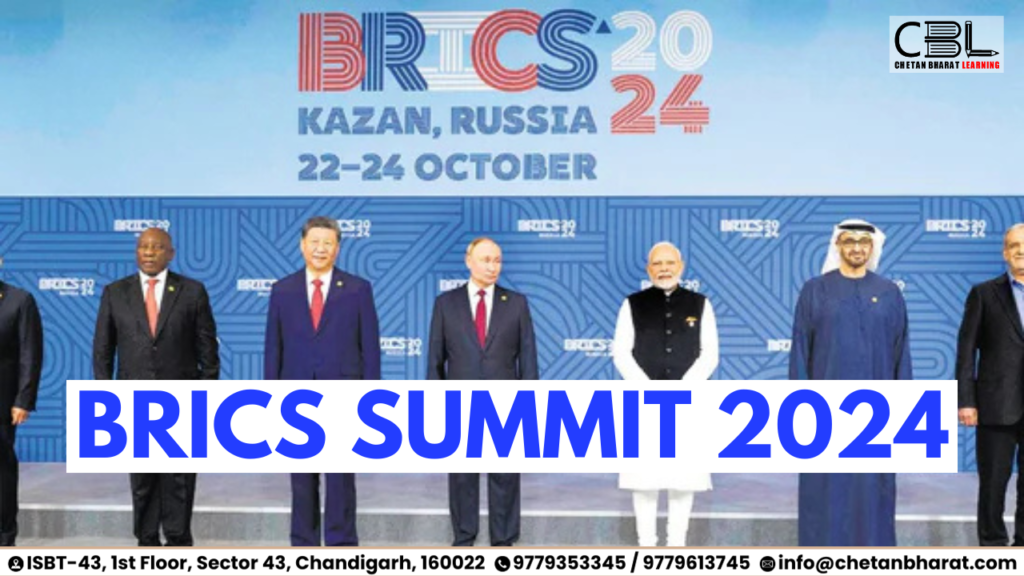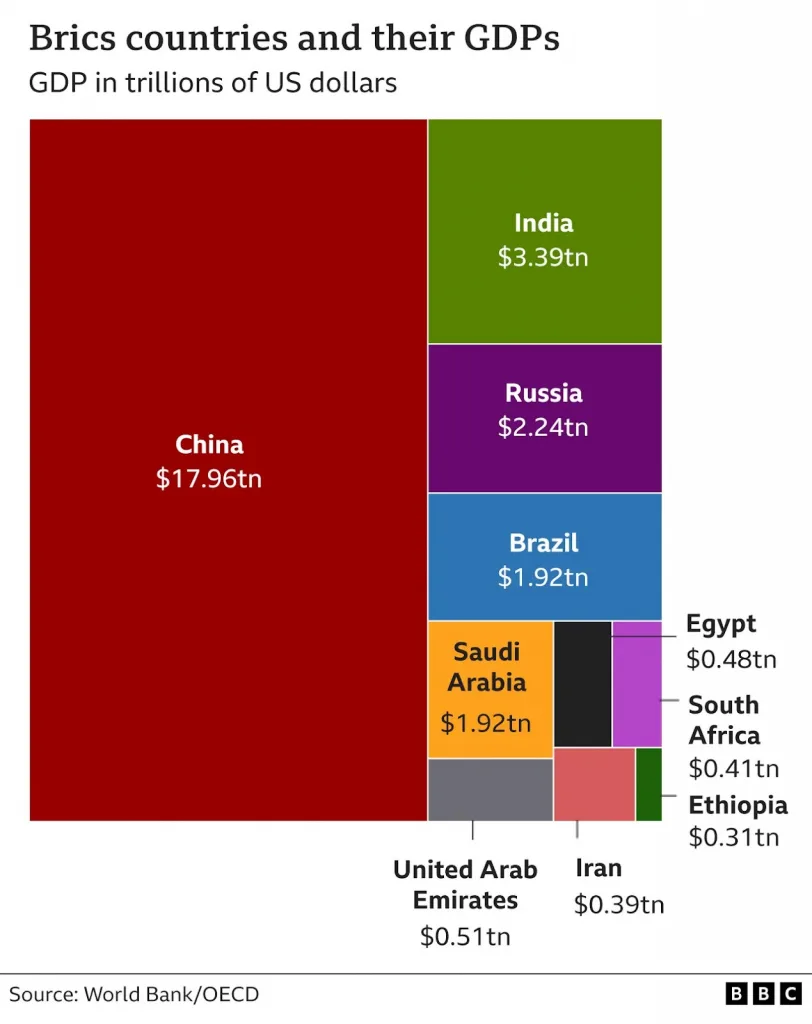
Important for UPSC, State PCS
Prelims: BRICS, New Members in BRICS, India-China, India-Russia
Mains: General Studies Paper 2 : India’s Role in BRICS, Impact of expansion of BRICS, Significance of Multilateral Institutions
Context –
Summit was hosted by the Russia at Kazan.
- Kazan Declaration is a comprehensive document outlining key areas of cooperation and the bloc’s unified stance on global issues.
- Host: The 16th BRICS Summit was hosted by Russia in Kazan from October 22 to October 24, 2024.
- Theme: “Strengthening Multilateralism for Just Global Development and Security”.
- Participants: Leaders of BRICS nations (Brazil, Russia, India, China, and South Africa) along with new partner countries including Egypt, Ethiopia, Iran, Saudi Arabia, and the UAE.
- Objective: Discussing economic cooperation, multilateralism, geopolitical concerns, and the interests of the Global South.
Kazan Declaration – Key outcomes:
| Key Area | Highlights |
| Geopolitical Concerns | Call for peaceful resolution to the Ukraine conflict through diplomacy. |
| Concerns over the humanitarian crisis in Palestine and condemnation of violence in Gaza, West Bank, and Lebanon. | |
| Global Governance & Multilateralism | Emphasis on the reform of global financial architecture and multilateralism. |
| Support for the continued functioning of the G20 and a reformed, responsive global financial system. | |
| Economic Cooperation | Promotion of local currencies for cross-border payments to reduce trade barriers. |
| Agreement to explore the establishment of a BRICS Grain Exchange and a BRICS Cross-Border Payment System. | |
| Pandemic Preparedness & Health | Support for the BRICS R&D Vaccine Center and Early Warning Systems for infectious diseases. |
| Addressing antimicrobial resistance and enhancing healthcare collaboration. | |
| Environmental Conservation | Support for India’s Big Cats Conservation initiative and collaboration on protecting endangered species. |
| Expansion & Partnerships | Welcoming new BRICS partners from Egypt, Ethiopia, Iran, Saudi Arabia, and the UAE, expanding the bloc’s influence in the Global South. |
What is BRICS?
- It is an acronym that refers to a group of five major emerging national economies: Brazil, Russia, India, China, and South Africa.
- Origin: The term BRIC was coined by British economist Jim O’Neill in 2001 to represent emerging economies.
- The group began holding annual meetings starting in 2006 on the sidelines of the UN General Assembly (UNGA), and its success led to formal summits.
- BRICS nations have met annually at formal summits since 2009.
- South Africa was inducted in 2010.
- Expansion of BRICS: Argentina, Ethiopia, Egypt, Iran, Saudi Arabia, and the UAE are the six new additions to the BRICS.

It brings together five of the largest developing countries of the world, representing around 41% of the global population, around 24% of the global GDP and around 16% of global trade.

Significance of BRICS for India
- Strengthening South-South Cooperation: India views BRICS as a platform for fostering collaboration among developing countries, amplifying their voices in global institutions like the UN and World Bank.
- Balancing Global Power: BRICS serves as a counterbalance to Western-dominated alliances such as the G7. For India, this helps in diversifying its foreign relations and reducing dependency on Western powers.
- Trade Diversification: BRICS promotes economic cooperation, trade, and investment between member countries.
- New Development Bank (NDB): It provides BRICS nations with access to funding for infrastructure and sustainable development projects, aligning with India’s growth objectives.
Challenges
- Varying Agendas: India’s concerns over terrorism and border security may differ from other members like China and Russia, who may prioritize their regional and geopolitical interests over these issues.
- Geopolitical Rivalry: China’s growing influence within BRICS, especially with the inclusion of countries like Iran and Saudi Arabia (which have strong ties with China), raises concerns about BRICS tilting towards a pro-China bloc.
- Balancing Middle Eastern Alliances: The inclusion of Iran, Saudi Arabia, and the UAE introduces complexities in India’s relationships within the Middle East.
- Trade Barriers: Intra-BRICS trade barriers such as tariffs, regulatory differences, and currency issues persist, limiting India’s ability to fully capitalize on trade opportunities within the group.
CBL Practice Questions for Prelims
The New Development Bank (NDB) was established by BRICS countries to fund projects in which sectors?
A) Agriculture and Education
B) Infrastructure and Sustainable Development
C) Defense and Technology
D) Tourism and Culture
Answer: B) Infrastructure and Sustainable Development
CBL Mains Practice Question
Discuss the challenges of intra-BRICS cooperation, focusing on divergent political systems, economic disparities, and regional conflicts. How can these challenges be overcome?




Leave a Reply
You must be logged in to post a comment.